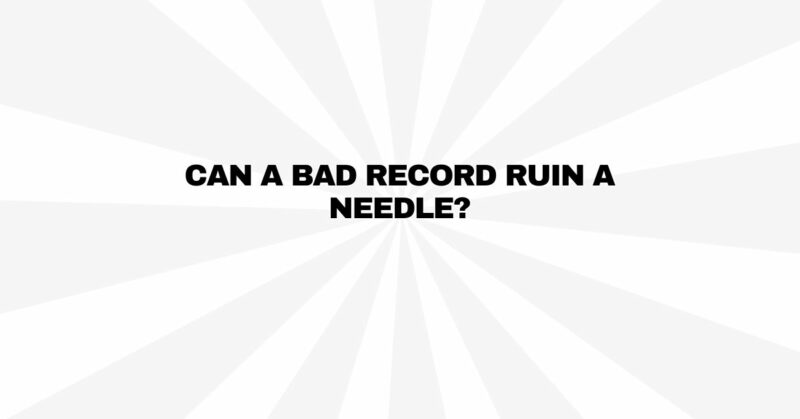Vinyl records, celebrated for their analog warmth and immersive sound, have experienced a resurgence in popularity in recent years. However, the delicate nature of these records and their susceptibility to damage raises concerns among enthusiasts about whether a bad or damaged record can ruin a turntable’s needle, also known as the stylus. In this comprehensive guide, we will explore the relationship between vinyl records and turntable needles, the potential risks posed by damaged records, and steps you can take to protect your equipment.
The Role of the Stylus:
The stylus is an integral part of a turntable’s cartridge, responsible for tracking the grooves of a vinyl record and translating the physical movements of the grooves into audio signals. It makes contact with the record’s surface as it moves along the grooves, generating sound through electromagnetic induction or piezoelectric methods, depending on the cartridge type.
Can a Bad Record Ruin a Turntable Needle?
While it’s unlikely that a single play of a “bad” record will immediately destroy your turntable needle, there are scenarios where a damaged or poorly maintained record can potentially harm the stylus or degrade its lifespan:
- Physical Damage: Records with visible scratches, deep grooves, or embedded debris can cause excessive wear and tear on the stylus. Repeated playback of such records may lead to premature stylus damage.
- Contaminants: Records that are exceptionally dirty or dusty may transfer particles to the stylus. These contaminants can accumulate over time and affect the stylus’s tracking ability and sound quality.
- Improper Alignment: Records with severe warping or off-center holes may cause the stylus to move erratically, increasing the risk of damage to the stylus and grooves.
- High Tracking Force: If the turntable is set to a high tracking force (the downward pressure of the stylus on the record), it can exacerbate the wear on the stylus when playing damaged records.
- Needle Misalignment: If the stylus is not aligned correctly, it may not track the grooves properly, leading to stylus wear and potential damage.
Protecting Your Stylus and Records:
To safeguard your turntable needle and records, consider the following practices:
- Inspect Records: Before playing a record, visually inspect it for visible scratches, deep grooves, and embedded debris. If a record appears excessively damaged, it’s advisable not to play it, or play it sparingly.
- Clean Records: Regularly clean your records using a proper vinyl cleaning solution and a record cleaning brush to remove dust and debris that can affect playback.
- Stylus Maintenance: Ensure that your stylus is in good condition and properly aligned. Replace the stylus when it shows signs of wear or damage.
- Set Proper Tracking Force: Follow the manufacturer’s recommendations for the correct tracking force for your cartridge. Avoid excessive tracking force, as it can accelerate stylus wear.
- Avoid Worn Needles: If you acquire a used turntable, consider replacing the stylus to ensure optimal performance and prevent potential damage from a worn needle.
- Record Alignment: Ensure that records are properly aligned on the turntable platter and that the spindle hole is centered to prevent tracking issues.
- Regular Maintenance: Clean and maintain your turntable and tonearm to prevent dust and dirt from transferring to your records and stylus.
Conclusion:
While a single play of a bad or damaged record is unlikely to immediately ruin a turntable needle, repeated exposure to such records can lead to premature stylus wear and potential damage. It’s essential to exercise caution when playing records that show visible damage or excessive dirt. Proper maintenance, cleaning, and alignment of your equipment and records are key to ensuring the longevity of your turntable needle and the continued enjoyment of your vinyl collection. By following these practices, you can protect your investment and savor the timeless sound of vinyl records for years to come.


